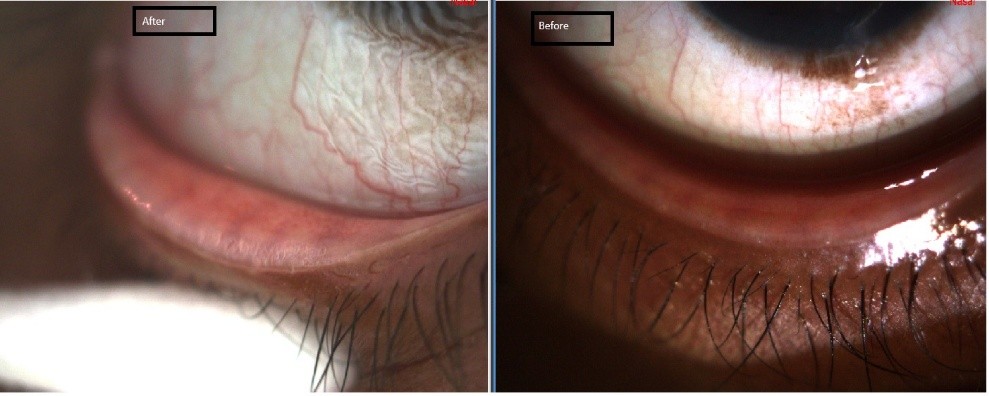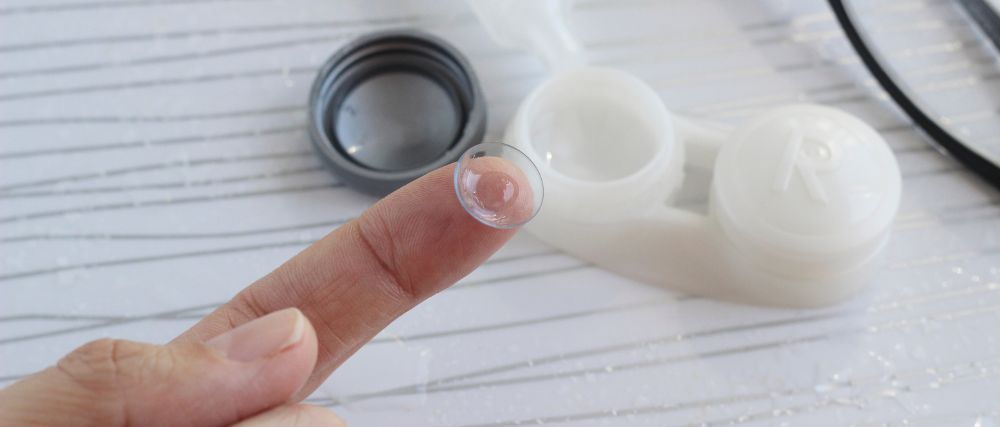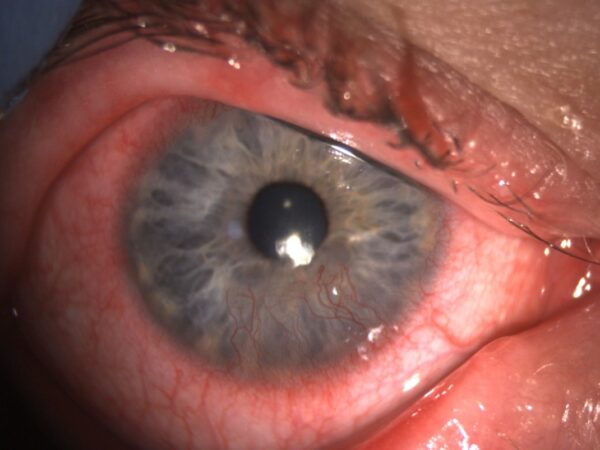Managing Ocular Rosacea Safely and Effectively in Diverse Skin Types with IPL Therapy
Rosacea is a common skin condition that can have a profound impact on a person’s quality of life. Involving not only facial symptoms but also ocular complications, such as meibomian gland dysfunction (MGD). Treating rosacea, including its ocular form, can be complex, especially in patients with darker skin tones due to the heightened challenge of diagnosis and the historical exclusion of these individuals from rosacea-related studies. This article explores IPL protocols for managing MGD and ocular rosacea, focusing on Fitzpatrick Skin Types IV, V, and VI, to ensure safe and comprehensive care for all skin types.
What is Rosacea?
Rosacea is a chronic inflammatory skin condition affecting areas on and around the face, most notably the cheeks, nose, and chin. Facial redness, bumps, flushing, and warmth are typical hallmarks of the disease.1 Patients often experience symptoms like erythema, papules, pustules, and ocular symptoms such as red, itchy, or watery eyes. Rosacea is a chronic skin disorder that has shown to negatively impact a patient’s quality of life.3 According to the US National Rosacea Society, an estimated 16 million Americans suffer from rosacea, with around 415 million cases reported worldwide10.
The condition is categorized into four primary subtypes1:
- Erythematotelangiectatic Rosacea – Characterized by widespread redness and visible blood vessels.
- Papulopustular Rosacea – Marked by acne-like breakouts
- Phymatous Rosacea – Presents with thickened skin, especially around the nose.
- Ocular Rosacea – Affects the eyes and surrounding areas.


Identifying Rosacea Across All Skin Tones
Recognizing rosacea in patients with darker skin tones requires a careful diagnostic approach, as signs may present subtly in darker-skinned individuals. On examination, lighter-skinned individuals may display obvious redness and telangiectatic vessels, while for darker skin tones, erythema might be harder to detect. Using tools like enhanced lighting, magnification, and photographic techniques against dark backdrops can aid diagnosis.1 Collaborating with Dermatologists experienced in all skin types are critical partners in identifying and managing this condition effectively.
In my clinical experience when diagnosing ocular rosacea, a thorough slit lamp exam is essential. Clinicians should check for telangiectatic vessels and thickening of the eyelid margin. Facial rosacea and ocular rosacea are deeply interconnected, with an estimated 60% of rosacea patients experiencing both.3
These findings are key to providing early and accurate treatment, especially in patients with darker skin tones who may otherwise go undiagnosed or misdiagnosed.

Dispelling Myths About Rosacea in Darker Skin Tones
Historically, rosacea has been associated primarily with fair-skinned individuals of European descent. However, recent studies confirm that rosacea occur across all skin types. Misdiagnoses, possibly due to limited clinician education on diverse skin presentations, have delayed proper treatment for darker-skinned patients.1
For example, a 2018 meta-analysis revealed a 5.4% prevalence of rosacea among adults worldwide.4,5 Additional studies highlight even greater occurrences in darker skin tones, such as a Colombian study that found a 12% rosacea prevalence in skin types IV and V, and a Saudi Arabian analysis revealing rosacea in up to 40% of women with skin types IV–VI. 1,6 These disparities underscore the importance of expanding awareness and knowledge among medical professionals.
How Ocular Rosacea Worsens Dry Eye Symptoms
Ocular rosacea presents with symptoms such as watery, itchy eyes and eyelid inflammation.3 In my clinical experience these symptoms are often accompanied by MGD, a disorder in which the meibomian glands fail to secrete adequate oils for the tear film.
Ocular rosacea often goes undetected in darker-skinned individuals because signs like lid erythema are less discernible. In my experience clinicians must focus on other markers, such as eyelid inflammation, blepharitis, and conjunctival redness, to aide diagnosis. A 2019 Saudi study of dark-skinned women underscores this point, as 76.8% of participants with ocular rosacea presented with ophthalmologic findings, despite varying skin tones.6
IPL for Treating Signs and Symptoms of Dry Eye in Darker Skin Tone patients
The FDA approved Intense Pulsed Light (IPL) therapy for hyperpigmentation, erythema associated with rosacea and now MGD. IPL has emerged as an effective treatment for dry eye due to MGD.8 Intense pulsed light (IPL) delivers energy towards chromosomes—specifically targeting melanin (skin pigment), hemoglobin (in blood vessels), and collagen.9 For MGD patients, IPL aids in liquefying and expressing thickened meibomian gland secretions, restoring proper lipid flow to the tear film. Despite the effectiveness of IPL more research is needed for patients with dark skin tones.

Over the past five years, I have successfully treated patients with ocular rosacea and Meibomian Gland Dysfunction (MGD) across all skin types I-VI using IPL, with a particular focus on skin types IV-VI. I utilize treatment protocols that start with lower energy settings, a two-pulse method, with a shorter pulse duration, and a longer delay between pulses and 100% cooling. My approach has led to improvements in patient symptom scores (OSDI) and tear breakup times.

Additionally, many of my patients have experienced improvements in skin texture, tone and lid erythema.

Considerations for Different Fitzpatrick Skin Types
When using IPL, patient safety is paramount, particularly for individuals with darker skin tones (Fitzpatrick IV–VI). Darker skin contains more melanin, which increases the risk of burns or hyperpigmentation if the therapy is not carefully administered. Optometrists must understand how rosacea presents in different Fitzpatrick types to tailor their approach effectively. I recommend starting with low joules, lots of conduction gel and performing spot testing prior to treatment.
Conclusion
Safely managing MGD and ocular rosacea across all Fitzpatrick skin types requires a nuanced approach that addresses the unique challenges of diagnosis and treatment for diverse populations. Dispelling myths about rosacea in darker skin tones and tailoring IPL treatments, to each patient’s needs can significantly improve outcomes. With a robust understanding of rosacea’s multifaceted nature and a commitment to inclusivity, clinicians can empower patients to reclaim their comfort, confidence, and quality of life.
References
- Onalaja AA, Lester JC, Taylor SC. Establishing the diagnosis of rosacea in skin of color patients. Cutis. 2019 Jul;104(1):38-41. PMID: 31487335.
- https://www.rosacea.org
- Huynh TT. Burden of Disease: The Psychosocial Impact of Rosacea on a Patient’s Quality of Life. Am Health Drug Benefits. 2013 Jul;6(6):348-54. PMID: 24991368; PMCID: PMC4031723.
- Gether L, Overgaard LK, Egeberg A, Thyssen JP. Incidence and prevalence of rosacea: a systematic review and meta-analysis. Br J Dermatol. 2018 Aug;179(2):282-289. doi: 10.1111/bjd.16481. Epub 2018 May 31. PMID: 29478264.
- Alexis AF, Callender VD, Baldwin HE, Desai SR, Rendon MI, Taylor SC. Global epidemiology and clinical spectrum of rosacea, highlighting skin of color: Review and clinical practice experience. J Am Acad Dermatol. 2019 Jun;80(6):1722-1729.e7. doi: 10.1016/j.jaad.2018.08.049. Epub 2018 Sep 19. PMID: 30240779
- Al-Balbeesi AO, Almukhadeb EA, Halawani MR, Bin Saif GA, Al Mansouri SM. Manifestations of ocular rosacea in females with dark skin types. Saudi J Ophthalmol. 2019 Apr-Jun;33(2):135-141. doi: 10.1016/j.sjopt.2019.01.006. Epub 2019 Jan 29. PMID: 31384155; PMCID: PMC6664278.
- Sangha AM. Diagnosing and Treating Rosacea in Skin of Color Patients. J Clin Aesthet Dermatol. 2023 Dec;16(12 Suppl 2):S14-S15. PMID: 38464742; PMCID: PMC10919953.
- Peira N, Ali EM, Modén NK, Fjellgren E, Lennmarken C, Hultcrantz M. Effectiveness and safety of intense pulsed light therapy for dry eye symptoms due to meibomian gland dysfunction-A systematic review and meta-analysis. Acta Ophthalmol. 2024 Nov 29. doi: 10.1111/aos.16802. Epub ahead of print. PMID: 39611367.
- Goldberg DJ. Current trends in intense pulsed light. J Clin Aesthet Dermatol. 2012 Jun;5(6):45-53. PMID: 22768357; PMCID: PMC3390232.
- https://www.rosacea.org
- https://skinofcolorsociety.org/
Latest Articles




HCP Popup
Are you a healthcare or eye care professional?
The information contained on this website is provided exclusively for healthcare and eye care professionals and is not intended for patients.
Click ‘Yes’ below to confirm that you are a healthcare professional and agree to the terms of use.
If you select ‘No’, you will be redirected to scopeeyecare.com
This will close in 0 seconds
